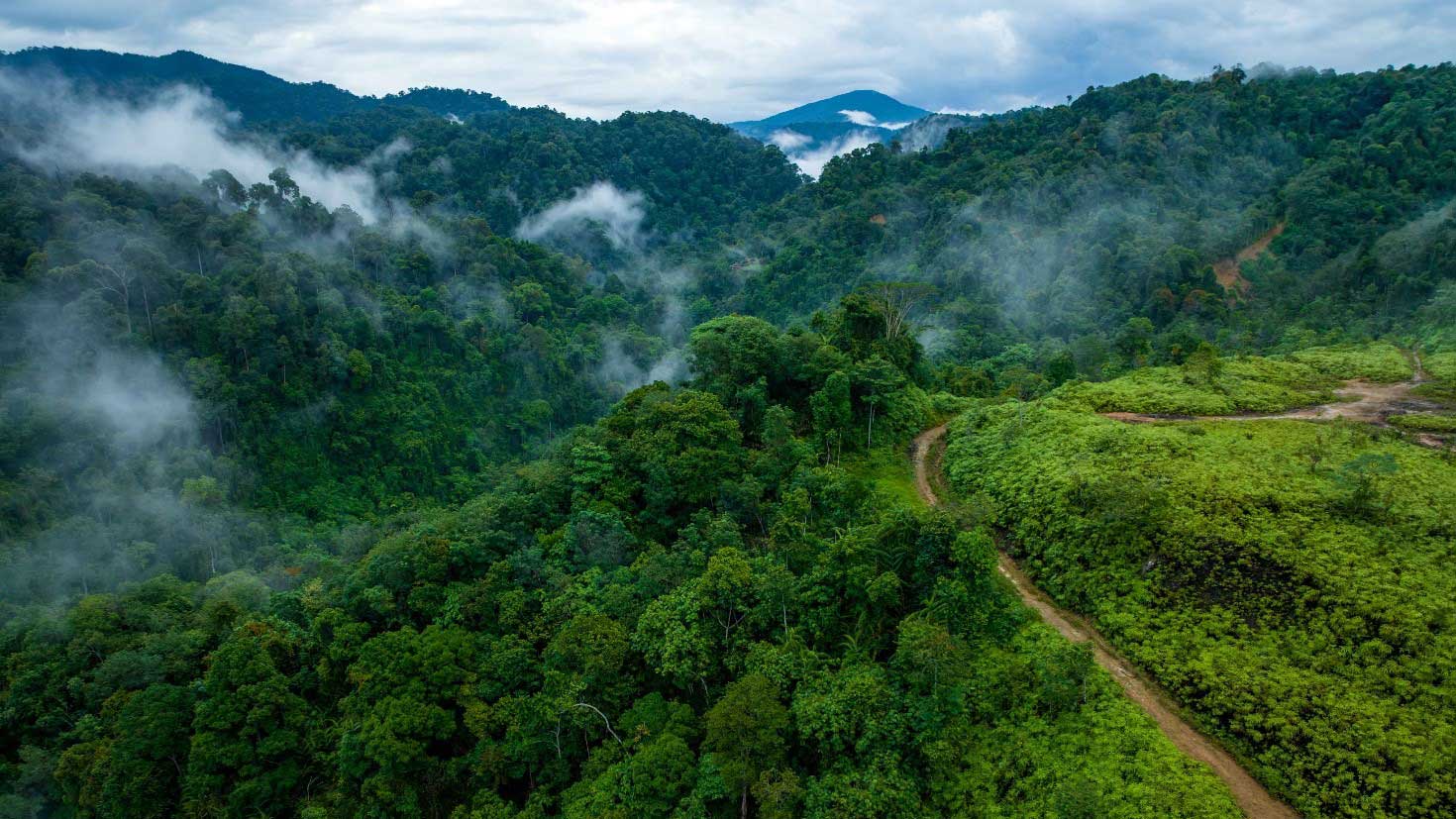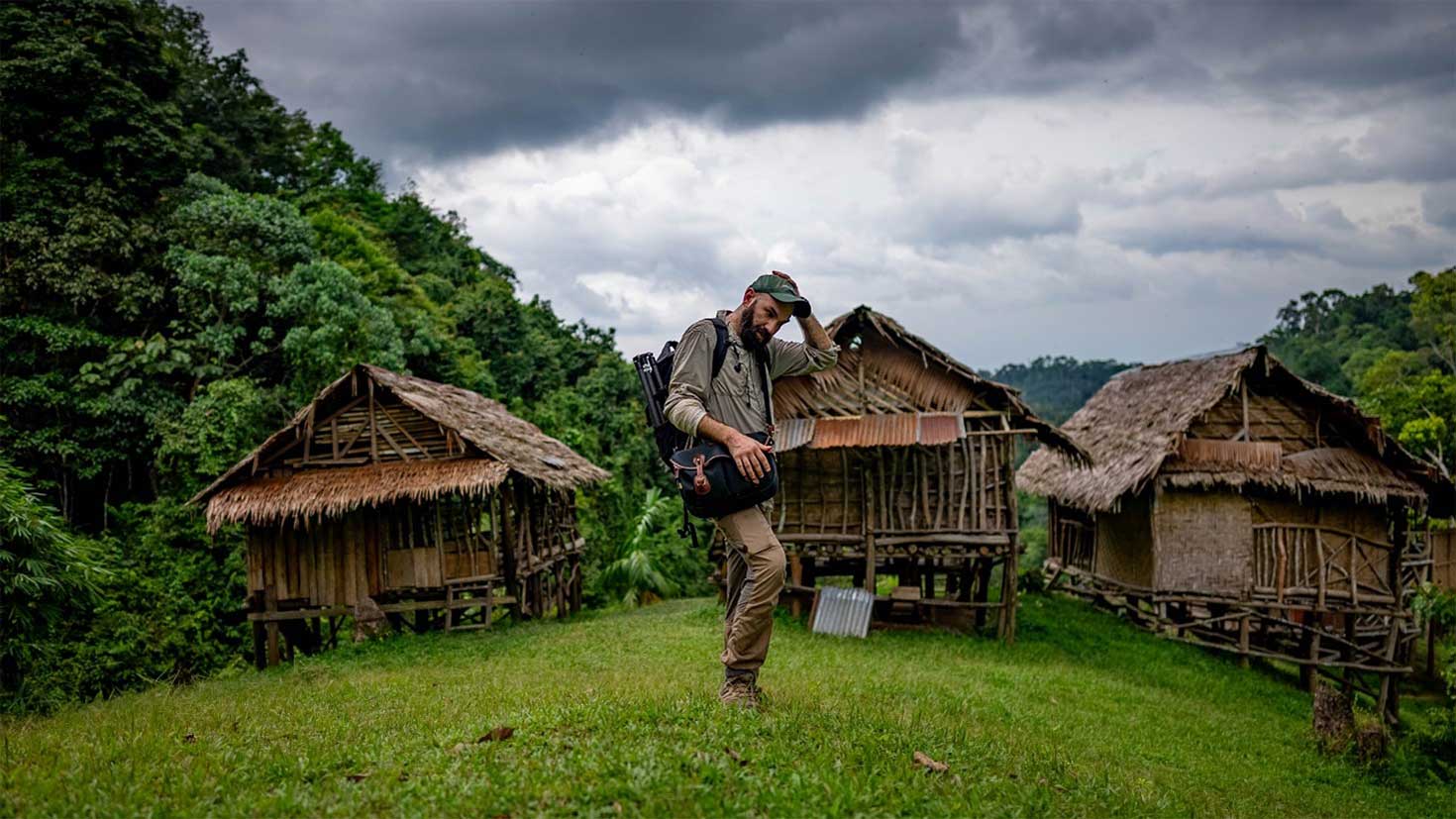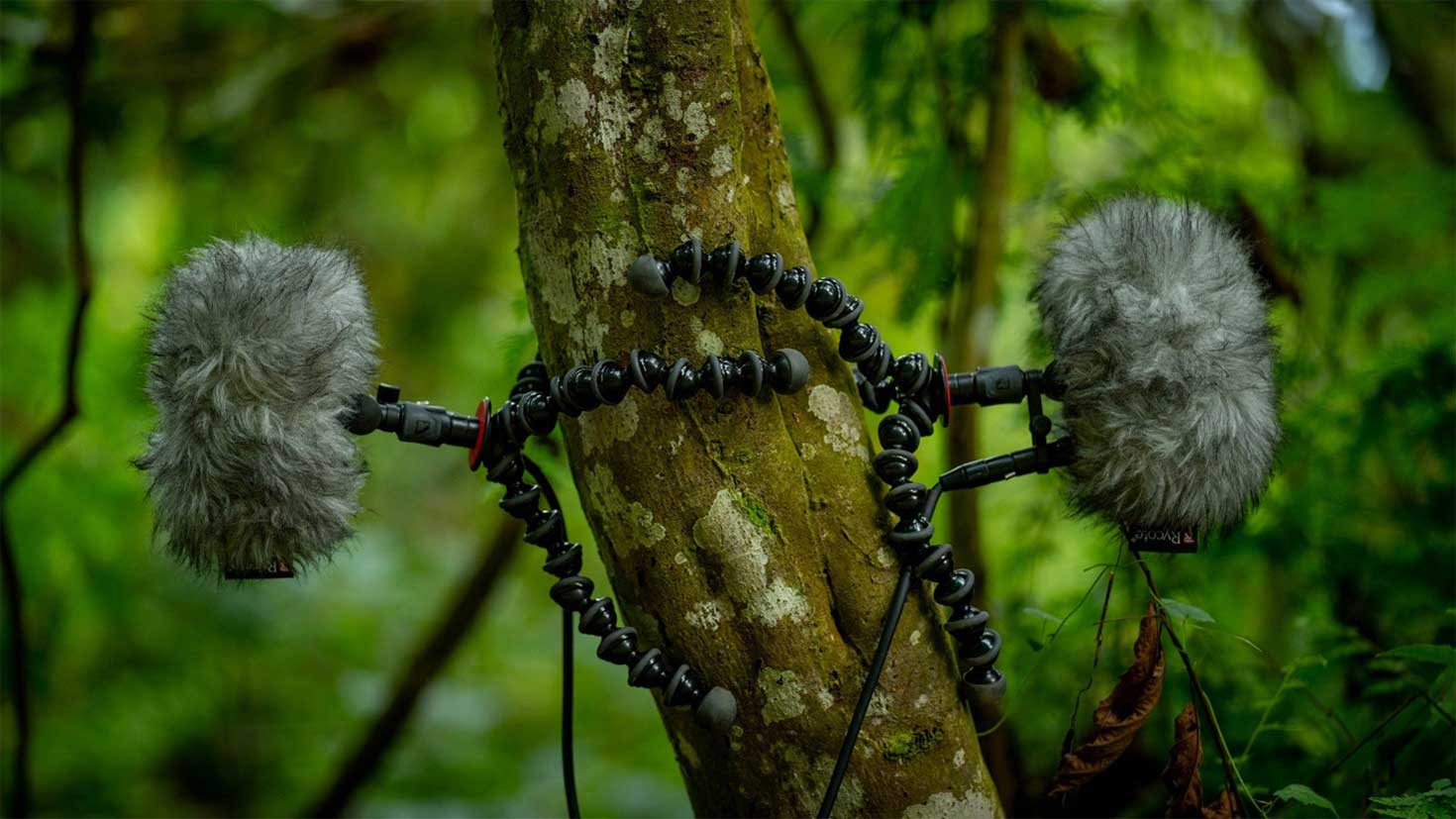
Aerial view of Gunung Leuser National Park
2023 Sound Recording Expedition to Sumatra
As we slide down a steep jungle hill, a few ants start biting me so seriously that I end up letting go of the liana I was gripping. While I try to figure out what’s causing the sharp pain in my hands and arms, my boots lose grip on the wet foliage underneath and I end up crashing through a tangle of spiky rattan. At this point I start to question the chain of decisions that lead to this chaotic moment in the rainforests of Sumatra. At least I forgot about my leech bites for a moment!
Believe it or not, this is not my first rainforest expedition. I’ve been organising and leading sound recordings trips to tropical jungles since 2017. I’ve worked in many such environments in Africa, the Americas and Asia. They each have their unique quirks and challenges, and there’s an amazing sense of accomplishment that comes with successfully completing a trip to such a place.
More importantly, the soundscapes are out of this world - breathtaking, complex and intense. Tropical rainforests harbour some of the loudest and most diverse biophony I’ve ever experienced. From insects and amphibians to birds and mammals, everyone and everything in this environment needs to communicate. Most do so by sound, since visibility is almost zero under the canopy and the smell of rotting vegetation tends to overpower most other odours. Sound remains a reliable way to convey information, and wildlife has evolved to share the frequency spectrum. In a healthy rainforest habitat, most frequencies are taken up by one species or another.

Brief stop on the way back to basecamp
Rainforests also full of challenges and curveballs, as briefly hinted above. A very short list includes leeches, biting insects, spiky vegetation, treacherous terrain, fungal infections, intestinal parasites, disease-carrying mosquitoes, and many more. The heat-humidity combo does not make things easier. The steep terrain and thick undergrowth add to the difficulty of accessing this fascinating environment.
Over the years I’ve slowly learned to deal with all these issues. The expedition leader community has been very helpful, and I’ve done a lot of learning the hard way. Nothing like immersing yourself in a steamy jungle to learn how to survive and work there. Having said that, recording in this environment is a different matter altogether. There are no courses that teach it, few people have even attempted it, and sound recording equipment is rarely designed to work here.
My first few rainforest expeditions (Ethiopia, Congo and Amazon) were eye-opening and humbling experiences. I was throwing myself into the deep end of the pool, using common sense and hoping for the best. I lost countless microphones to downpours. My bags and clothing started growing little mushrooms after weeks at 100% humidity. Ants made nests in my recording equipment. Elephants and other mammals found and inspected my equipment, sometimes destroying it in the process. Each and every one of these experiences taught me important lessons.

Every day is a rainy day in the rainforest
Arguably the most important one was keeping microphones dry. When I travel, I bring lots of dry bags and silica gel packets. This helps protect the mics while they’re stored, but in the field they need to be exposed to the elements. I’d been asking Rycote to come up with a weatherproof blimp for years, until one day they asked me to test such a prototype!
It took a few iterations but eventually the weatherproof Nanoshields were ready. I brought them along on expeditions to Costa Rica, Madagascar, Brazil and most recently Sumatra. Even if my microphones are ok with a little bit of humidity, I really appreciate the peace of mind that the Rycote blimps can offer.
Over the 13 years+ I’ve been working as sound designer and recordist, I’ve learned to appreciate the value of long-form sound recordings. Having many hours of soundscapes recorded in the same spot, ideally over several day-night cycles is invaluable. And what is the best (and only) way to achieve this? Unattended recording with drop rigs, as I like to call them. Setting up a rig and leaving it to record for days on end, in a nutshell.

Setting up a drop rig in the rainforest
This can be a little bit nerve-wracking. Leaving many thousands of pounds worth of equipment at the mercy of the elements and/or wildlife isn’t for the faint of heart. It’s also slightly controversial. Some purists think this is akin to cheating, because attended recording is the only fair way to record. Thankfully I’m not bothered by these issues and actually prefer unattended recording because it allows nature and wildlife to get back to its normal state once I’ve been there and disturbed them.
This approach also drastically increases the chances of equipment suffering from humidity issues. Using the Nanoshield blimps has allowed me to record in some pretty unforgiving environments, the Sumatran rainforest being one of them. Of course, there are other tricks I employ beyond weatherproofing the windsocks.
When I’m picking my drop rig locations, the first thing on my mind is the perspective and framing of the soundscape. I also consider where the rain is likely to come from, and whether I have little areas of rain shadow. Large bent trees are excellent as they don’t affect the soundscape too much and can protect my rigs from direct rainfall. Thick foliage and rainforest canopy helps to some extent, but the downpours I’ve encountered in jungles are usually so violent that I need to make my own rain covers. I do this by using twigs, leaves, vines and anything else that occurs naturally in the environment.

Rycote Nanoshields in action
In the end I managed to record a few hundred hours of mesmerising soundscapes in Sumatra: dawn and dusk choruses, intense insect stridulations, loud thunderstorms, jungle rivers and creeks, calm daytime ambience, plus the occasional mammal or bird call. It was a successful expedition by any metric, even if I was so exhausted at the end that I slept for more than 14 hours on several nights.
If I look at my career through the lens of the Sumatra expedition, I can see myself as a living metaphor for the Dunning Kruger effect. I still have lots to learn about working in rainforests, even though I had most of it figured out! Fortunately that sounds exciting for me. I’m already planning more rainforest expeditions and I will make sure to bring a few Nanoshields along.
_____
George Vlad is an award-winning sound recordist, audio director and expedition leader. Find out more about him on his website: https://mindful-audio.com/george-vlad-credits and listen to his work on his Youtube channel: https://www.youtube.com/GeorgeVlad